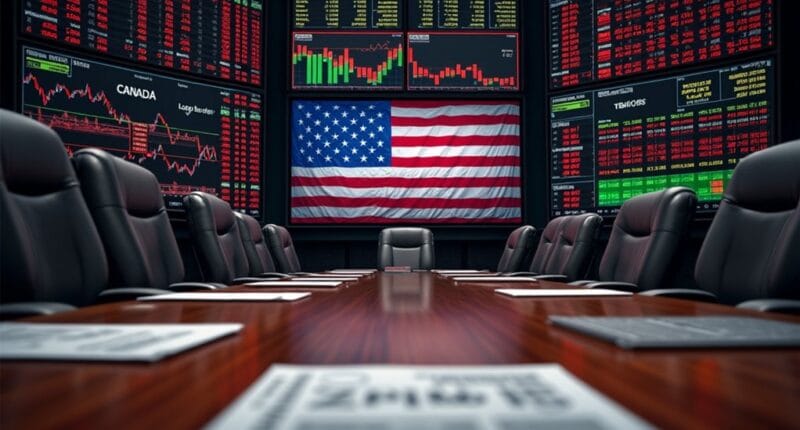A federal court unanimously smacked down Trump’s “Liberation Day” tariffs, declaring them flat-out illegal. Markets initially jumped for joy at the clarity, then crashed back to earth as reality set in. The administration immediately appealed, leaving U.S. importers in limbo until at least mid-2025. With a potential GDP hit of 0.9% looming and presidential trade powers under scrutiny, this economic Jenga tower keeps getting shakier.

In a stunning blow to presidential trade authority, a unanimous ruling by the U.S. Court of International Trade has declared Trump’s recent tariffs illegal, sending shockwaves through the global economy. The court, featuring judges from both sides of the political aisle, didn’t mince words – the administration’s use of the International Economic Emergency Powers Act to impose sweeping tariffs just wasn’t going to fly.
The ruling takes aim at the “Liberation Day” tariffs and hits particularly hard at the 25% rates slapped on Canada and Mexico. Talk about awkward neighbor relations. These tariffs, which the administration claimed were necessary for border security and fighting the fentanyl crisis, are now in legal limbo. Some older tariffs, like those under Section 232 and 301, managed to dodge this particular bullet. Market analysts recommend portfolio diversification to protect against trade-related volatility.
US court strikes down Trump’s tariffs on Canada and Mexico, leaving border security measures in legal uncertainty while older trade restrictions remain intact.
Markets reacted like a cat on a hot tin roof. First came the rally – traders love nothing more than certainty. But that celebration proved short-lived. As reality set in about the messy appeals process ahead, volatility took over. The whole situation’s about as stable as a Jenga tower in an earthquake. The uncertainty has triggered a significant market downturn, with projections showing a 0.9% GDP reduction for 2025.
The Trump administration didn’t waste any time filing an appeal, and the Federal Circuit Court granted a stay faster than you can say “trade war.” This means those controversial tariffs stick around until at least late July 2025, when the court plans to hear arguments. The court emphasized that tariff power belongs to Congress, not the presidency.
And if the Supreme Court gets involved? Well, grab some popcorn – this could drag on for months.
For U.S. importers who’ve been paying these tariffs, there might be a silver lining. If the ruling stands, they could get their money back. But nobody’s counting those chickens just yet.
The whole mess has left businesses hanging, unsure whether to plan for a future with or without these tariffs. One thing’s crystal clear: this ruling isn’t just about money – it’s a direct challenge to how presidents can use emergency powers for trade policy. The ripple effects could last for years.





